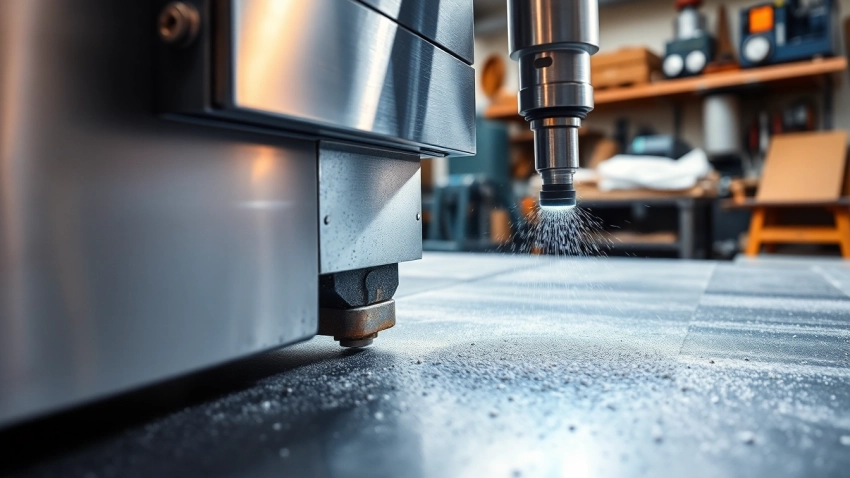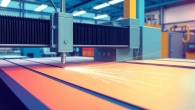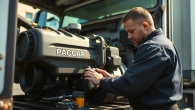
Maximizing Efficiency with Laser Cleaning Machine Solutions for Industrial Cleaning
Understanding the Laser Cleaning Machine
What is a Laser Cleaning Machine?
A Laser cleaning machine is an advanced technological device that employs laser beams as a means to remove contaminants from a variety of surfaces. Unlike traditional cleaning methods, which can be abrasive or involve chemical solvents, laser cleaning is a non-contact and environmentally friendly process. The machine generates concentrated light energy that effectively vaporizes or ablates unwanted materials without damaging the underlying substrate. This innovative cleaning technique is finding applications across numerous industries due to its efficiency and precision.
How Does a Laser Cleaning Machine Work?
The operation of a laser cleaning machine is fundamentally based on the principles of laser-induced breakdown and thermal effects. When the laser beam interacts with the contaminated surface, it creates a highly focused area of energy. This energy heats the pollutants, causing them to vaporize or expand rapidly, thereby dislodging them from the substrate without harming the material beneath. The process can be finely tuned by adjusting parameters such as wavelength, pulse duration, and energy intensity. The result is a clean surface that is free from rust, paint, oil, or other unwanted materials.
Benefits of Using a Laser Cleaning Machine
- Non-destructive cleaning: Unlike abrasive methods, laser cleaning preserves the integrity of surfaces, making it ideal for delicate tasks.
- Environmentally friendly: This technique eliminates the need for harsh chemicals, reducing pollution and health risks associated with solvent-based cleaning.
- High efficiency: Laser cleaning can significantly reduce cleaning times compared to conventional methods, providing faster turnaround in various applications.
- Precision: Laser machines provide control and accuracy, allowing operators to clean intricate or difficult-to-reach areas without damaging adjacent surfaces.
- Cost-effective: While initial investments may be higher, the reduction in labor and material costs, in conjunction with decreased maintenance needs, often leads to long-term savings.
Applications of Laser Cleaning Machine
Industrial Applications of Laser Cleaning Machine
Laser cleaning machines are increasingly utilized in industrial settings for various purposes. Common applications include the removal of rust, paint, and contaminants from metal surfaces prior to coating or welding. Industries such as automotive, manufacturing, and aerospace benefit from laser cleaning, as it provides a means to prepare surfaces without introducing foreign substances that could compromise the integrity of parts.
Furthermore, laser cleaning is ideal for maintaining equipment and machinery, extending their operational life. Since it minimizes the use of chemicals and reduces waste, it aligns well with sustainability goals that many industries are striving to achieve.
Laser Cleaning Machine in Art Restoration
In the field of art restoration, a laser cleaning machine serves as an invaluable tool for conservators who work to preserve and restore historical artifacts and artworks. The precision offered by lasers allows restorers to selectively remove dirt, grime, and unwanted layers without risking damage to the underlying materials. This capability is particularly beneficial for delicate surfaces such as paintings, sculptures, and historical documents, where traditional cleaning methods might lead to loss of detail or structural integrity.
Collaborations between conservators and laser technologists have led to the development of customized laser cleaning protocols, ensuring that even the most sensitive pieces can be treated effectively while maintaining their artistic value.
Use Cases in Heavy Machinery Maintenance
Heavy machinery, often subject to harsh operating conditions, frequently requires maintenance to ensure optimal performance and longevity. Laser cleaning machines can effectively remove grime, oil, and corrosive residues from equipment components, restoring their functionality and preventing costly breakdowns.
The ability of laser technology to reach tight spaces and intricate geometries makes it particularly suitable for cleaning industrial machines like turbines, molds, and other complex assemblies. This method reduces downtime, as cleaning can often be completed on-site without extensive disassembly, enhancing overall efficiency in maintenance protocols.
Choosing the Right Laser Cleaning Machine
Factors to Consider When Selecting a Laser Cleaning Machine
When choosing a laser cleaning machine, several critical factors need to be considered to ensure that the right solution is selected for specific cleaning tasks:
- Material compatibility: Different materials respond uniquely to laser cleaning processes; therefore, understanding the properties of the substrates involved is essential.
- Type of contaminants: Analyze the nature of contaminants that require removal, such as rust, paint, or organic materials, as this will influence the type of laser technology needed.
- Power and wavelength: The power level (measured in watts) and wavelength of the laser beam particularly affect absorption rates and cleaning effectiveness on the target material.
- Efficiency and speed: Evaluate the cleaning speed and efficiency of the machine in relation to your operational requirements to ensure maximum productivity.
- Ease of use: Consider the user-friendliness of the operation to facilitate quick training of operators and ensure safe handling.
Common Pitfalls to Avoid
Selecting a laser cleaning machine requires careful consideration to avoid potential pitfalls that could arise from inadequate knowledge or improper application:
- Underestimating power requirements: Choosing a machine with insufficient power might result in inefficient cleaning processes, leading to prolonged job times.
- Neglecting safety regulations: Always ensure that the machine complies with local safety standards and protocols to protect workers and environment.
- Ignoring material characteristics: Misjudging how different materials react to laser cleaning could result in surface damage or ineffective cleaning.
- Overlooking maintenance needs: It’s crucial to understand the ongoing maintenance required for the laser cleaning machine to ensure long-term operation and reliability.
Price Ranges and Budgeting for Investment
The investment required for a laser cleaning machine can vary widely depending on its specifications, capabilities, and manufacturer. Generally, entry-level machines start from a lower price range, suitable for light applications, while industrial-grade machines can command significantly higher prices due to their advanced features and durability.
Beyond the initial acquisition costs, businesses should factor in operating expenses, maintenance, and any training required for staff. Budgeting for these ongoing costs is essential to gauge the true return on investment that the Laser cleaning machine can offer.
Operation and Maintenance of Laser Cleaning Machine
Best Practices for Operating a Laser Cleaning Machine
To achieve optimal results when operating a laser cleaning machine, it’s essential to adhere to best practices that enhance both performance and safety:
- Thorough training: Ensure all operators are well-trained in the machine’s operation, including safety protocols and troubleshooting techniques.
- Regular calibration: Periodically calibrate the machine to maintain high cleaning standards and effectiveness.
- Use appropriate settings: Customize the laser parameters such as intensity and pulse rate according to the specific material and contaminants.
- Monitor performance: Continuously observe the cleaning process for signs of inefficiency or potential issues to address them promptly.
Routine Maintenance Tips
Routine maintenance of a laser cleaning machine is crucial to ensure its longevity and effectiveness:
- Regular inspections: Conduct frequent checks on critical components, such as optics and cooling systems, to ensure reliability.
- Cleaning laser optics: Keep the laser optics clean and free from debris to maintain optimal beam quality and performance.
- Software updates: Stay updated with the latest software and firmware versions from the manufacturer to ensure the machine operates efficiently.
- Seek professional servicing: Engage professionals for thorough servicing and repairs when required instead of attempting DIY solutions.
Safety Protocols to Follow
The operation of laser cleaning machines comes with inherent risks, necessitating strict adherence to safety protocols:
- Protective gear: Operators should wear appropriate safety gear, including goggles, gloves, and protective clothing, to guard against potential hazards.
- Emergency procedures: Establish clear emergency response procedures for accidents or machine malfunctions.
- Marking and zoning: Clearly mark operational zones and restrict access to non-trained personnel during operation to minimize risk.
- Regular safety audits: Conduct routine safety audits to evaluate compliance with regulations and identification of potential hazards.
Future Trends in Laser Cleaning Machine Technology
Innovations in Laser Technology
As technology continues to advance, several noteworthy innovations are emerging within the realm of laser cleaning machines. These include:
- Increased automation: Automation in laser cleaning systems is enhancing operational efficiency and precision while reducing labor costs.
- Integration of AI: The introduction of artificial intelligence in laser cleaning machines facilitates real-time adjustments based on surface conditions and contaminant types.
- Improved mobility: Portable laser cleaning systems are becoming more prevalent, allowing for versatile applications in diverse settings.
- Energy efficiency: Innovations are also focusing on making laser cleaning machines more energy-efficient, emphasizing sustainability in manufacturing.
Market Predictions for Laser Cleaning Machines
Market analysts predict significant growth in the laser cleaning machine sector, driven by increasing demand for cleaner processes across several industries. As more companies adopt sustainable practices and seek advanced cleaning technologies, the adoption rate of laser systems is expected to rise sharply.
Furthermore, regulatory pressures related to environmental standards may further accelerate the shift toward laser cleaning solutions, prompting enhanced research and development efforts. The market is poised for expansion, with innovations leading the way in improving efficiency and reducing costs.
Impact of Technology on Industry Standards
The proliferation of laser cleaning technology is reshaping industry standards and practices. As more organizations recognize the benefits of transitioning to sustainable, non-destructive cleaning methods, traditional cleaning practices are being re-evaluated. This shift not only drives companies to adopt laser cleaning as a viable solution but also compels manufacturers to enhance their offerings to meet evolving customer needs.
In conclusion, the laser cleaning machine stands as a beacon of innovation, offering efficient, environmentally friendly cleaning solutions across diverse applications. By staying informed about the latest developments and best practices in this field, businesses can leverage laser cleaning technology to optimize operations and enhance sustainability.












Leave a Reply